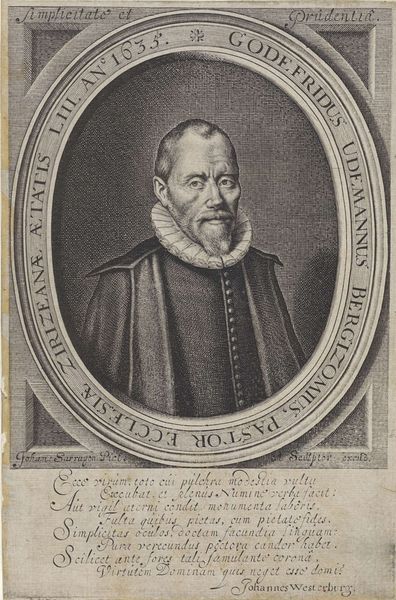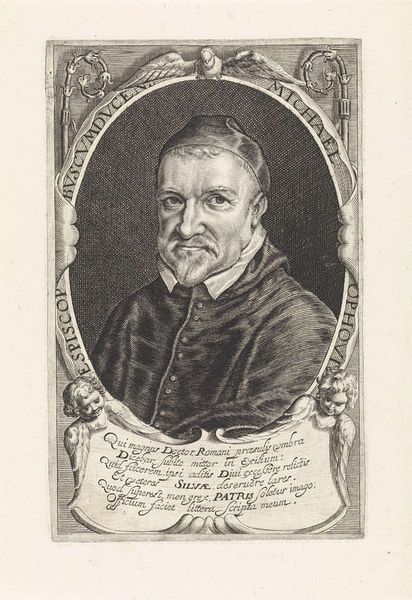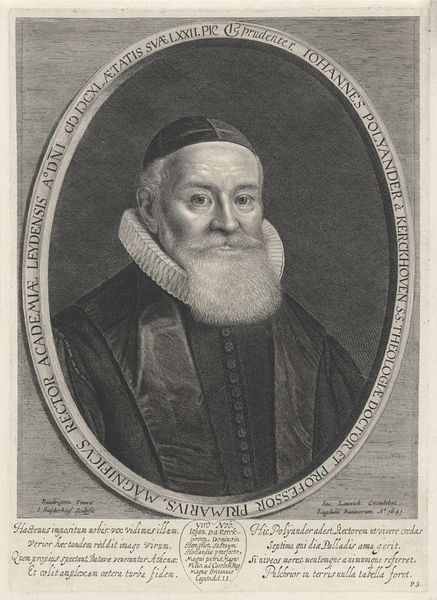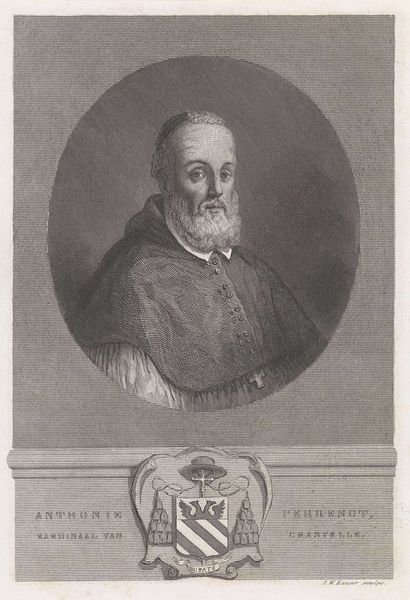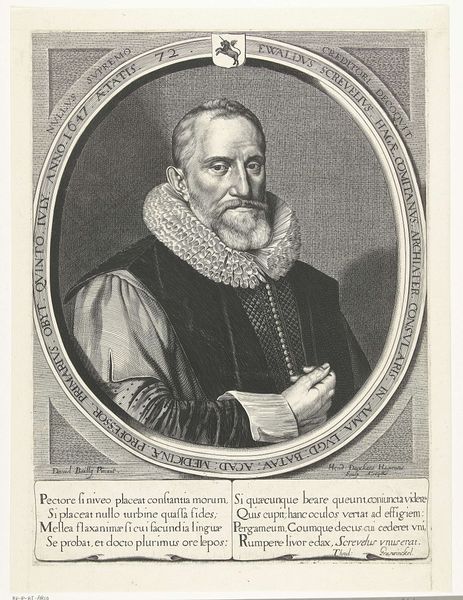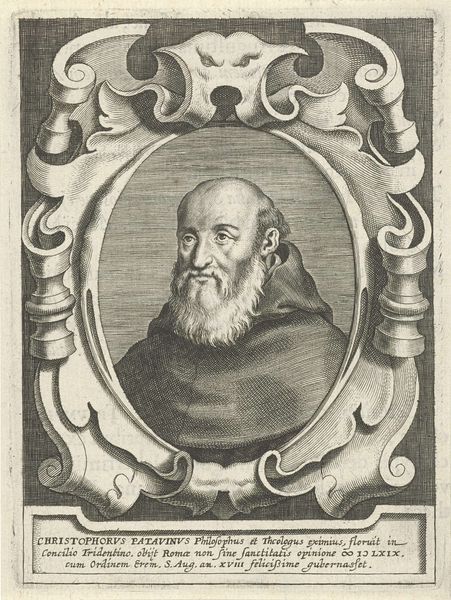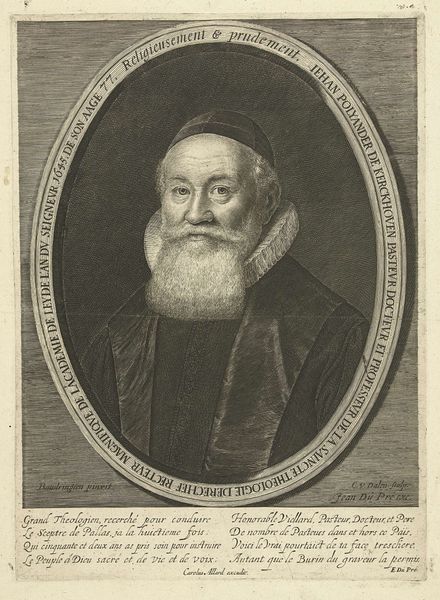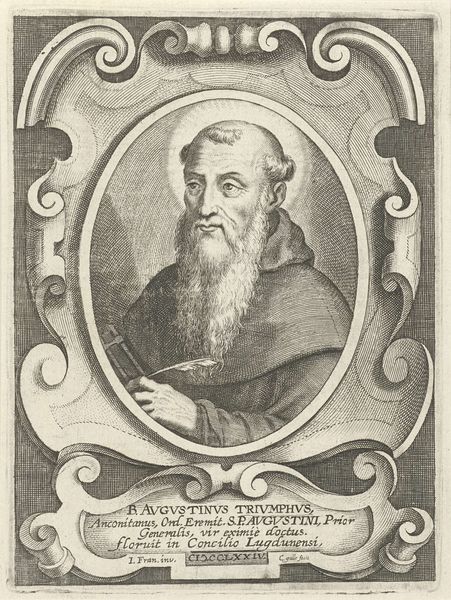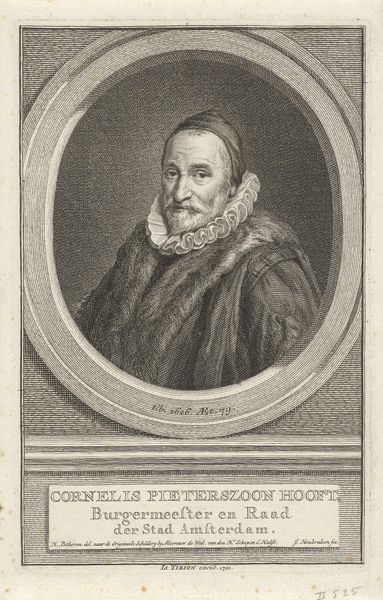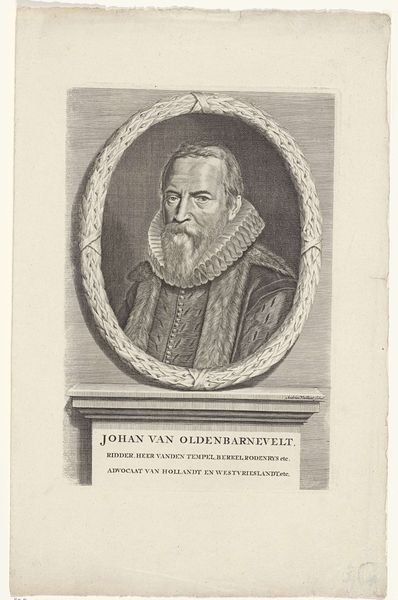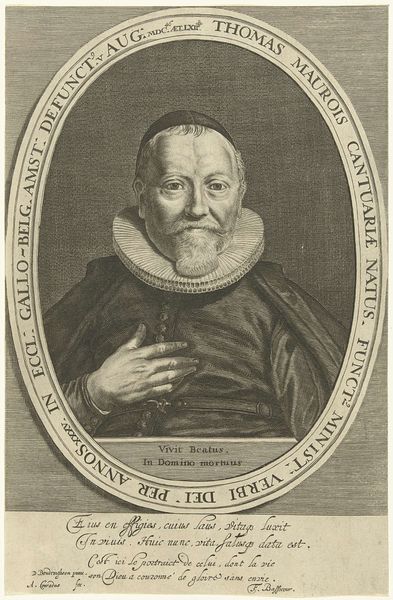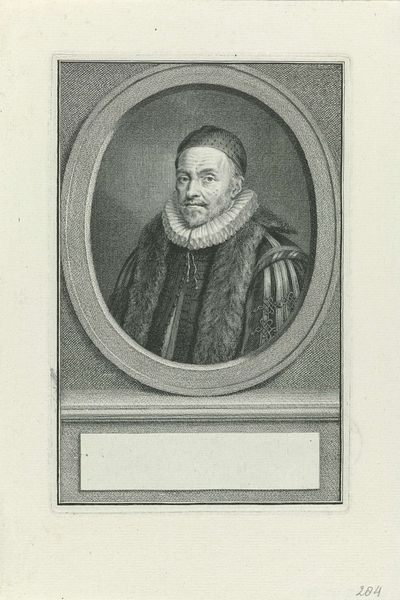
print, engraving
#
portrait
#
baroque
# print
#
old engraving style
#
history-painting
#
engraving
Dimensions: height 181 mm, width 136 mm
Copyright: Rijks Museum: Open Domain
Curator: I find this engraving to be remarkably well-preserved. There’s a certain crispness to the lines. Editor: Yes, there’s an austerity here. It looks very Lutheran. I think it must be in his clothing and the severe mien of his face. Curator: That’s a good way to put it. Let me give you some context. This is a portrait of Rudolphus Petri, an engraving made in 1738 by Jan Caspar Philips. It’s held here in the Rijksmuseum. It's a powerful representation of its subject. Editor: Knowing it's an engraving informs my understanding. Look at the texture created by the lines, especially in the clothing and background. What paper would have been used? How long would this process have taken? How were these engravings circulated? Were they luxury items or more widely accessible? These kinds of considerations are essential to understanding its value and impact at the time. Curator: Those are critical questions. Prints played a vital role in disseminating knowledge and images in the 18th century. Considering Philips was a renowned printmaker, his workshop likely operated efficiently, employing specialized labor. Editor: How interesting. And the text beneath the portrait? Is it a dedication or summary of the person? What class was this person? All of those issues relate to how portraits of men are understood during the baroque era, when the production of images supported specific political and economic powers. Curator: Indeed. The inscription offers details about Rudolphus Petri's life: born in Amsterdam in 1585, died there in 1649 at the age of 64. It then adds a touching epitaph of sorts, celebrating his intellect, devout life, and the comfort of everlasting rest in Heaven. Editor: That's interesting… it connects earthly status with heavenly reward. The social function of images like these. The way visual imagery creates lasting forms of cultural memory is quite remarkable, don't you think? Curator: Absolutely. It provides insight into the societal values and beliefs prevalent in that era. Thanks for bringing that point up. Editor: Likewise. A fresh materialist perspective makes me think more deeply about the politics embedded within this type of portrait.
Comments
No comments
Be the first to comment and join the conversation on the ultimate creative platform.
